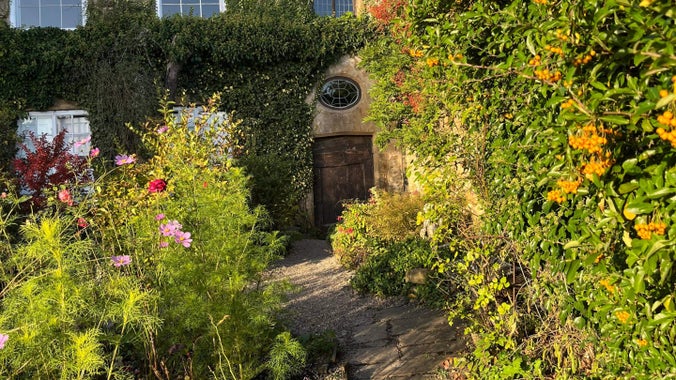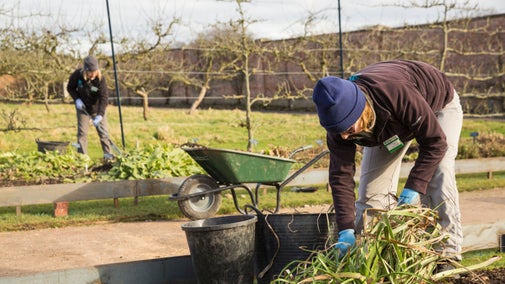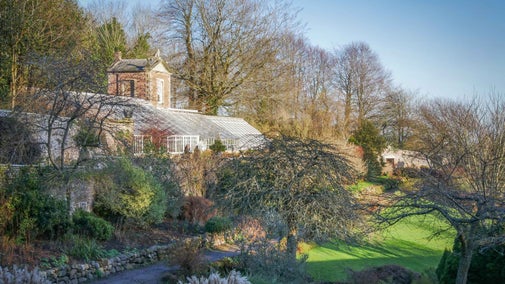
Discover more at Crook Hall Gardens
Find out when Crook Hall Gardens is open, how to get here, the things to see and do and more.

Wander through a series of interlinked gardens, each with its own character. Intriguing paths lead you to blooming borders, secluded walled gardens, an orchard and a tranquil moat pool. Sheltered spots tempt you to sit a while and soak up your surroundings. Views of Durham Cathedral are a reminder that this green oasis is close to the heart of the city. Find out all the things to see and do here.
Celebrate the festive season at Crook Hall Gardens between Saturday 22 November and Sunday 28 December, Friday to Sunday. See the medieval hall lit up with Christmas charm, discover fairytale-inspired art around the peaceful gardens, or make your own bespoke decorations at a craft workshop.
Find out everything you need to know about Christmas at Crook here.
The gardens complement each other, while differing in age and personality. Formal areas with neat lines and topiary hedges border traditional English cottage gardens, boasting a colourful medley of roses, wisteria, perennials, trees and shrubs.
The serene moat pool is planted with water lilies, hosta and iris. The gentle sound of running water and views towards fields and woodlands beyond the gardens enhance its peaceful appeal.
The gardens are a haven for wildlife, alive with bees and butterflies collecting nectar from flowers, ducks and moorhens on the pond and songbirds in the trees.

Watching the seasons change at Crook Hall Gardens is reason to return again and again.
Winter is the season to see things in the gardens differently. Without leaves, the bark of trees and shrubs is revealed; the twisted, contorted stems of corkscrew hazel, the winged and cork-like bark of winged spindle, while the distinctive silver trunks of silver birch remind us what inspires their name.
Look out for rich dark berries on ivy, cheerful red berries on holly bushes, and the spiny variegated leaves of hedgehog holly. The evergreen shrub sweet box fills the air with its unmistakeable winter perfume.
Spring grows into a riot of colour. Hellebores ease us out of winter, with snowdrops and winter aconites joining them as an early sign of spring. Bright splashes of anemones, cyclamen and crocus soon appear. The vibrant yellows of daffodils, forsythia and kerria bring sunshine on even the dullest day. Tulips, grape hyacinth and fritillaria add variety to the palette.
A large magnolia, benefiting from spring warmth in the shelter of the walled garden, puts on a magnificent display of flowers. And a frothy mass of blossom makes the orchard an unmissable sight.
Roses come into their own each summer, filling the gardens with their beauty and scent. From June, phlox, oriental poppies and ox-eye daisies vie for attention in the walled gardens. The moat pool teems with life, including frogs, newts and dragonflies.
Keep an eye on the maze in the autumn. A living puzzle planted mainly of cotoneaster, at the beginning of September it sports dark green leaves; red berries soon appear, then develop over the coming weeks in a fascinating transformation.
Several shrubs have an autumnal ‘wow’ moment. Look out for beautyberry with its vivid purple berries. Autumn crocuses also provide unexpected pops of colour.
Keen to dig a little deeper? Each Friday, expert garden volunteers share their knowledge about flowers, plants, shrubs and nature-friendly, sustainable gardening. On Wednesdays, you can step into the gardens' past on a guided tour exploring history and literary links. Both tours are free with admission to the gardens and there's no need to book ahead. Head to our what's on page to find out more.

Find out when Crook Hall Gardens is open, how to get here, the things to see and do and more.
Celebrate the festive season at Crook Hall Gardens. See the medieval hall lit up with Christmas charm, discover fairytale-inspired art around the peaceful gardens, or make your own bespoke decorations at a craft workshop.

Discover where to eat and drink during a visit to Crook Hall Gardens in Durham.

A stone’s throw from Durham’s World Heritage Site, Grade I listed Crook Hall is considered one of the city’s most significant medieval domestic buildings.

We're lucky to currently have a full team of volunteers at Crook Hall Gardens, so have paused recruitment for the time being. Please check back for future opportunities.

Find out where dogs are welcome at Crook Hall Gardens and the facilities on offer for your canine companions.

Discover our gardeners’ top tips so you can make the most of your garden, plot or window box.

Embrace frosty mornings, glistening landscapes, and tranquil woodland walks across historic estates and dramatic scenery. From snow-dusted gardens to crisp, clear views, experience the serene beauty and seasonal magic that winter brings.
